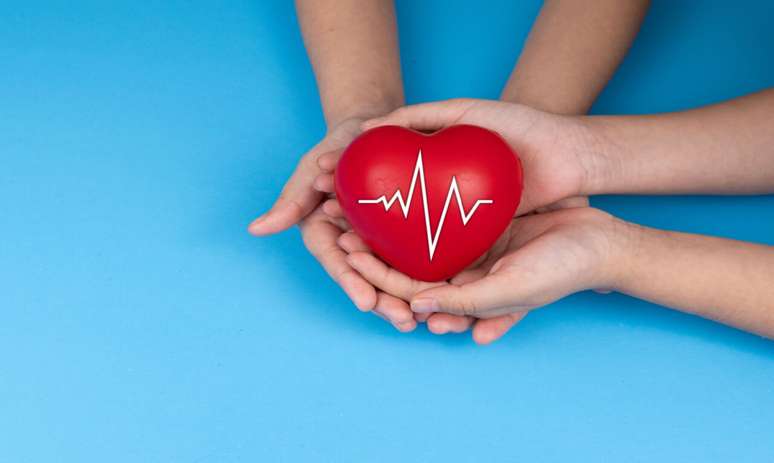August Blue Red is the vascular health prevention campaign, commonly affected by diseases such as varicose veins, thrombosis and other diseases
Countryside august blue red is an initiative of the Brazilian Society of Angiology and Vascular Surgery (SBACV) that aims to make all Brazilians aware of the importance of vascular health care. In this sense, prevention focuses on diseases such as varicose veins, thrombosis and aneurysm, as well as other problems that can put the patient’s life at risk.
html[data-range=”xlarge”] figure image img.img-d8131359f8d3778bbdd32f3da2104889oz8cn3h0 { width: 774px; height: 463px; }HTML[data-range=”large”] figure image img.img-d8131359f8d3778bbdd32f3da2104889oz8cn3h0 { width: 548px; height: 328px; }HTML[data-range=”small”] image figure img.img-d8131359f8d3778bbdd32f3da2104889oz8cn3h0, html[data-range=”medium”] figure image img.img-d8131359f8d3778bbdd32f3da2104889oz8cn3h0 { width: 564px; height: 337px; }HTML[data-range=”small”] .article__image-embed, html[data-range=”medium”] .article__image-embed { width: 564px; margin: auto 0 30px; }
According to Dr. Cristienne Souza, vascular surgeon, knowledge of the most common vascular pathologies makes early diagnosis and treatment possible, preventing the progression and worsening of diseases and even the risk of death. The main risk factors common to these pathologies are smoking, a sedentary lifestyle, family history, aging and dyslipidemia (high blood fat levels), warns the specialist.
Diseases that mostly affect the vascular system
According to her, some of the more common diseases that affect blood vessels include:
- Deep Vein Thrombosis (DVT): consists of the formation of a blood clot inside a deep vein, mainly in the veins of the lower limbs (calves and thighs), but can affect any vein in the body;
- Aneurysms: they are dilations of the wall of a blood vessel and can occur anywhere in the body, being most common in the arteries of the brain. The aorta, the largest artery in the body, is the most commonly affected site outside the brain;
- Peripheral arterial disease (PAD): it is caused by atherosclerosis, characterized by the deposit of fat and calcium on the walls of the arteries, reducing their caliber and hindering the passage of blood to the tissues irrigated by them;
- Varicose veins: they are dilated and tortuous veins located under the skin that no longer conduct blood properly; often causing discomfort.
When the diseases get worse
According to your doctor, any of these conditions can aggravate a delicate health condition. “DVT can be complicated by pulmonary embolism, which occurs when a thrombus breaks free from the vessel wall (called an embolus) and travels through the circulation, reaching the pulmonary arteries, with potentially life-threatening consequences,” he warns.
With regard to aneurysms, mainly of the abdominal aorta, the main complication is rupture, which is very serious due to the large loss of blood into the abdominal cavity. “PAD can cause total interruption of blood flow to the tissue irrigated by the blocked artery, with the risk of infarction and tissue necrosis, and varicose veins can experience acute complications such as thrombophlebitis (which is inflammation with thrombosis of the vein) or more dragged like wounds that do not heal on the legs”, points out the vascular surgeon.
“People should be particularly aware of unexplained pain or tiredness in the legs, swelling, discolouration and/or temperature in the limbs (such as paleness, cyanosis, coldness),” he warns.
Despite this, according to the doctor, aneurysms usually have no symptoms. Therefore, it is essential to consult and advise an angiologist or a vascular surgeon. “Pain is a warning sign that can indicate rupture,” Cristienne points out.
Prevention
Among the important measures to prevent vascular disease and maintain health
blood vessels, the doctor recommends:
- Follow a balanced diet rich in fruits, vegetables, fiber and lean proteins. Avoid saturated fats and excess sugars;
- Control your weight, as obesity is a major risk factor for vascular disease;
- Exercise regularly, as exercise helps blood circulation, weight control and cardiovascular health.
- Do not smoke, as smoking is a major risk factor for vascular disease. Quitting smoking is one of the best things you can do for the health of your blood vessels;
- Check your blood pressure (BP), as high blood pressure is a major risk factor for heart disease and stroke
- Check your blood sugar.
- Have periodic consultations and regular examinations with your vascular surgeon.
In addition, Dr. Cristienne Souza also emphasizes the importance of stress management, as physical and mental exhaustion can also affect vascular health. “Sleep well, relax and practice meditation,” she advises.
Source: Terra
Ben Stock is a lifestyle journalist and author at Gossipify. He writes about topics such as health, wellness, travel, food and home decor. He provides practical advice and inspiration to improve well-being, keeps readers up to date with latest lifestyle news and trends, known for his engaging writing style, in-depth analysis and unique perspectives.


-tog6qwclp0tf.png)


![Everything starts here: What you expect, on Friday, on May 16, 2025, in 1177 episodes [SPOILERS] Everything starts here: What you expect, on Friday, on May 16, 2025, in 1177 episodes [SPOILERS]](https://fr.web.img3.acsta.net/img/01/ca/01ca45a3e2429e494bc796ca5ca4837c.jpg)



